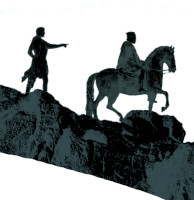“Sight of distant horsemen might have stampeded the white men, though neither had shown any sign of the white feather before…”
-The Daughter of Erlik Khan
To show the white feather was to show cowardice. Conversely, a feather in the cap was a traditional term, originally for killing a Turk as a protestant mercenary, helping the catholic nations with their struggle against Islam. Captain John Smith, of Jamestown fame, had the honor of wearing three feathers in his cap for the three Turks he had killed in battle.
One that “showed the white feather” was as much as surrendering his honor to that enemy by turning away from his martial responsibility and betraying a sign of inferior masculine lineage. Professional soldiers and the aristocracy of this period were, in military service, apt to demonstrate a reckless level of courage, more to differentiate themselves from the cowardly, toiling masses than as a leadership method. The gaudy costumes of officers were contrived to make them targets and highlight their displays of daring.
However, these two uses of the feather to symbolize courage on one hand and cowardice on the other—though existing side-by-side—do not seem to have a causal relationship. The expression “to show the white feather” comes from cockfighting, where a white feather in a bird's tail is considered a sign of inferior breeding.
He: Gilgamesh: Into the Face of Time
link › jameslafond.blogspot.com











